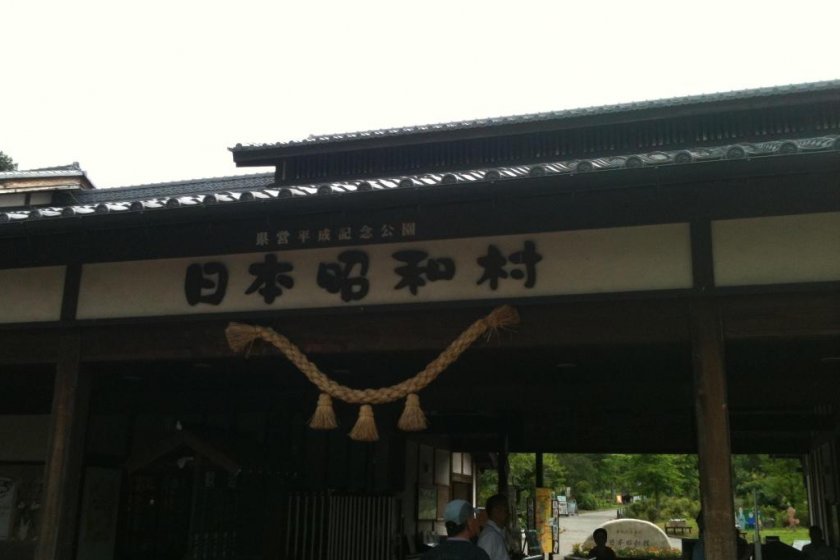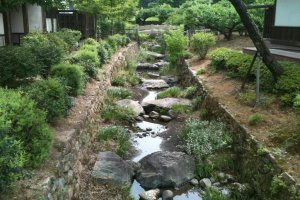Much of the lower Mino Basin is a 1970s over constructed concrete sea but I was very excited to escape this at Nihon Showa mura. Located only a few minutes from downtown Mino-Kamo city, and nestled in a forest it is a respite to a simpler time. Showa mura provides visitors of all generations with a natural oasis to experience traditional activities, artforms, food, candies and cultural performances.
Built as a celebration of the tenth year of the current emperor's reign, the park is framed as a small town in Showa 30s (1955~1965) a period of reconnecting to Japanese roots of art, architecture, and what it is to be Japanese. Immediately after entering the park i was surprised bu the architecture. Unlike their Taisho and Meiji predecessors Showa architecture returned to the more traditional plaster and wood construction. But what enhanced the entire environment was the surrounding forest and fields of native wild and tended flowers. I was only 10 minutes from a large city, five from a major highway and many people were around me yet it was quiet. The Japanese refer to this environment as a Satoyama or home mountain; a place regardless of where you are from feels like home. Every step I took was a botanical discovery. Flowers, grasses and fruit trees lined the paths and I was told by one staff person that they changes with the seasons. I can read Japanese but am not well versed in botanical language so I was relieved to have the latin names so I could look up thier English names later.
Nihon Showa Mura is divided into five different areas; front zone, home zone, town area, Village area, Nature Fureai (exchange) and Outdoor activities. Each zone helps visitors visualize life in this time period. I didn't have a lot of time so I mainly explored the town area. There I could experience making rice crackers, washi (Japanese paper), hand-loom crafts, wood crafts, pottery, dyed cloth, glass wind chimes and toys like the “take tombo”; bamboo helicopter. Besides handicrafts, visitors can try their hand at making butter, bread, tofu, soba and processing tea. Each activity is a separate fee. At the Showa-za theater period films and plays slip you back in time. Sadly nothing was showing while I was there.
Though Nihon Showa Mura would be considered as an amusement park by many, it is billed as a “Showa time slip” activity park. After all there are no rides, no loud sounds and nothing overly stimulating. Though there aren’t any roller coasters, one can drive go carts and battery cars, splash in the shallow ponds of clean mountain water, row boats around the lake, sled down a grass hill, just play games or even take a nap under a tree. There is a petting zoo for small children and horse back riding and archery for the older ones. And when you want to wash away the day, take in the hot springs or foot baths.
There were several restaurants to choose from serving Japanese food ranging from curry and udon to pork cutlets and full traditional five course set menus. Many of the restaurants use local vegetables and meat to help support local farmers. I had a big bowl of fresh vegetable curry for ¥300. For the meat lover, there is Hida Ro, a Japanese barbecue serving Hida beef and local seasonal vegetables. In the winter Hidaro also serves family sized hot pots.
Nihon Showa Mura was designed for Japanese tourists but it provided me with an historical and cultural window. Though there is almost nothing written in English, I could easily understand and navigate due to the highly visual signage.
If you are traveling around Japan with children, and getting tired of regular museums and “old places” or just want to get creative, it is worth an entire day. There is something for everyone.

































